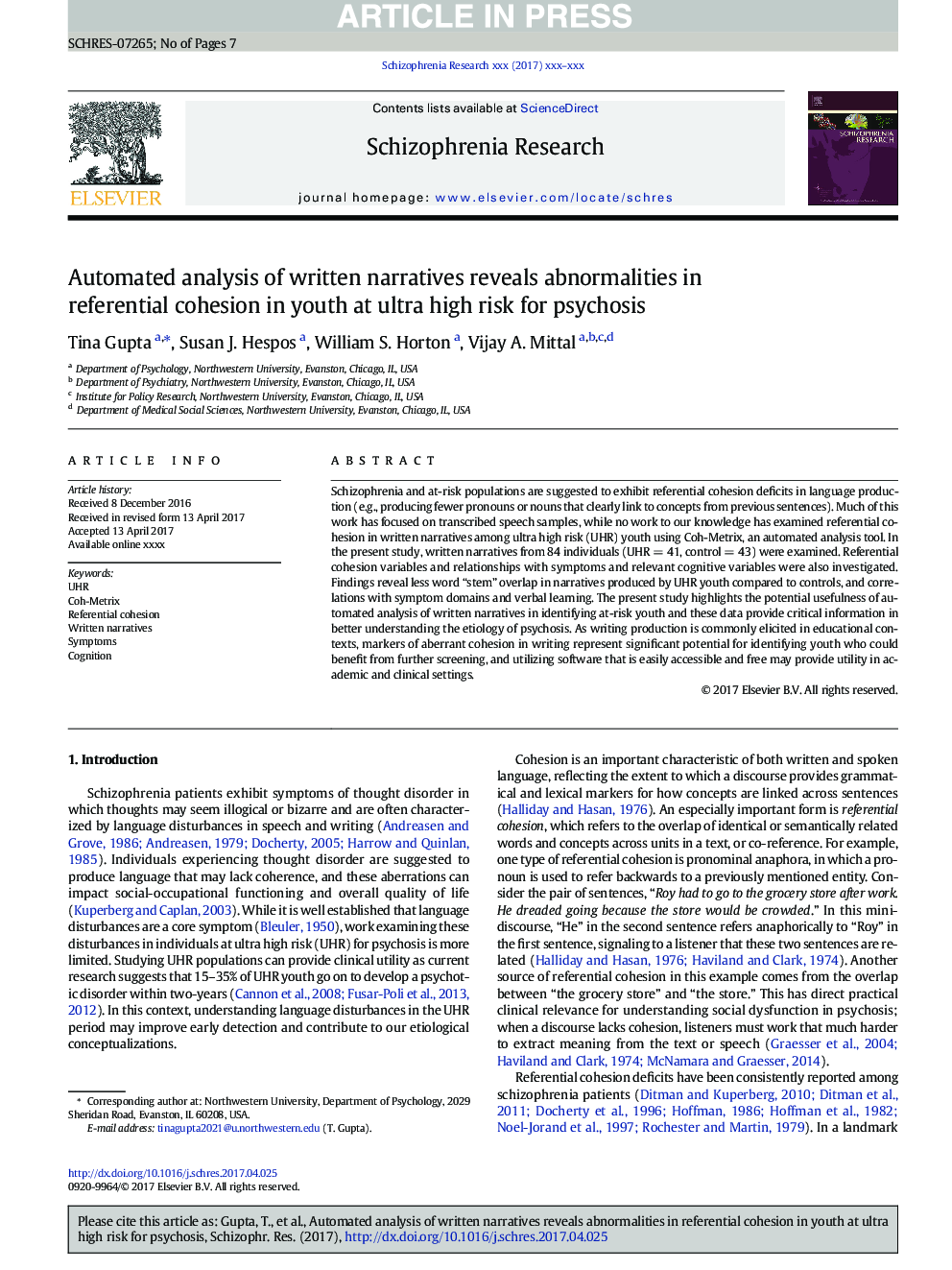| Article ID | Journal | Published Year | Pages | File Type |
|---|---|---|---|---|
| 6821868 | Schizophrenia Research | 2018 | 7 Pages |
Abstract
Schizophrenia and at-risk populations are suggested to exhibit referential cohesion deficits in language production (e.g., producing fewer pronouns or nouns that clearly link to concepts from previous sentences). Much of this work has focused on transcribed speech samples, while no work to our knowledge has examined referential cohesion in written narratives among ultra high risk (UHR) youth using Coh-Metrix, an automated analysis tool. In the present study, written narratives from 84 individuals (UHR = 41, control = 43) were examined. Referential cohesion variables and relationships with symptoms and relevant cognitive variables were also investigated. Findings reveal less word “stem” overlap in narratives produced by UHR youth compared to controls, and correlations with symptom domains and verbal learning. The present study highlights the potential usefulness of automated analysis of written narratives in identifying at-risk youth and these data provide critical information in better understanding the etiology of psychosis. As writing production is commonly elicited in educational contexts, markers of aberrant cohesion in writing represent significant potential for identifying youth who could benefit from further screening, and utilizing software that is easily accessible and free may provide utility in academic and clinical settings.
Related Topics
Life Sciences
Neuroscience
Behavioral Neuroscience
Authors
Tina Gupta, Susan J. Hespos, William S. Horton, Vijay A. Mittal,
